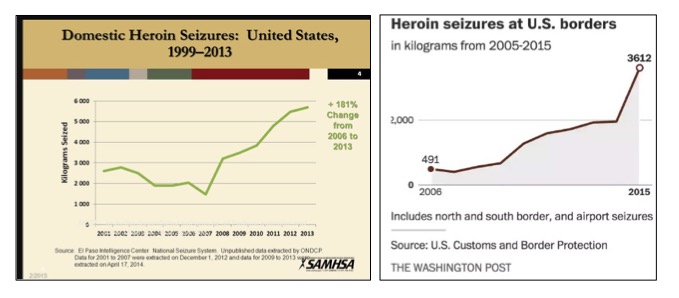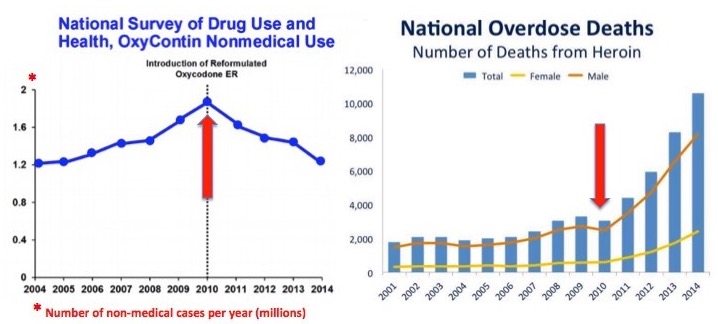Some people just don't get it. Which is fine. That is unless they're writing for the Washington Post, which provides instant credibility, whether it's deserved or not. Keith Humphreys, a psychologist (1) at Stanford University, who fashions himself as an expert in all things opiate, does not get it, yet this doesn't stop him from putting out a steady stream of questionable writings on the subject.
For example, this past March we were treated to "Americans take more pain pills — but not because they’re in more pain," a confounder-filled concoction of suppositions which concluded, without any real evidence, that Americans are a bunch of weaklings or druggies because we take more opioids (Humphreys seems to hate them) than people in other countries who have similar pain.
Before we take a look at his latest abomination let's examine whether Humphreys is qualified to be writing on this topic at all.

Keith Humphrey's credentials. Such as they are.
Given that Humphreys' CV does not exactly inspire confidence I decided to assemble an expert panel to give their thoughts on this matter.

Well, that didn't work very well. One for, one against, and two abstentions. Our experts didn't provide much help. I guess we better take a look at what this guy has to say and figure it out for ourselves. He argues that the surge in fentanyl is a function of geopolitical forces which make heroin harder to come by, so fentanyl filled the void. I don't buy it.
"But few people appreciate fentanyl’s potential to permanently alter illegal drug markets and international relations along with them."
This was true perhaps five years ago when people didn't even know what fentanyl was (2). Now it is impossible to pick up a newspaper without finding a story about fentanyl killing a bunch of people. And it's no great secret that our "international relations" with China have taken a beating. They are the ones making most of the stuff.
"Opium poppy-sourced drugs depend on control of arable land in countries [Afghanistan and Mexico] where law enforcement is a minimal or at least corruptible presence. Plant-based opium production also requires a substantial number of agricultural workers who plant and tend opium poppies, remove raw opium from seed pods at harvest time and then package and store raw opium, some of which will be processed by other workers into drugs such as heroin."
In other words, production of heroin has become difficult because of turmoil in areas where poppy is grown, which has left a void that has been filled by fentanyl. In which case, it's pretty hard to explain the following: 
US heroin seizures. (Left) Domestic Heroin Seizures: United States, 1999–2013 (Right) Heroin Seizures at US Borders. This is evidence that poppy-based narcotics are hard to come by??
No, getting heroin into the US is hardly a problem, regardless of whatever is going on in Afghanistan, Mexico, or Cleveland.
"Fentanyl in contrast is an opioid analogue that can be created from chemicals in a laboratory."
As if this is a new development? It's not. Fentanyl was discovered in 1959. Demerol (1939) and methadone (1937) come from the lab, not poppy.
"Currently, efforts to eradicate drug crops produce understandable resentment among poppy farmers, in some cases driving them into working with groups such as the Taliban out of anger, financial desperation or both."
Yeah, that'll keep me up at night.
"If synthetic drugs become dominant, the United States and other consuming nations will no longer be concerned about developing-world drug crops, removing a burr from under the saddle of international relationships and potentially weakening insurgencies abroad at the same time."
Huh??? We are being smothered by fentanyl (for very simple reasons, see below) and I'm supposed to worry about saddles and burrs? What, is this a Western??
"Fentanyl producers can also simply set up small labs within consuming countries and thus avoid the smuggling altogether."
Perhaps they can, but they aren't.
"[The influx of fentanyl] is being driven by the Mexican drug cartels... They receive their fentanyl from China, but also make their own in labs located in Mexico... with 95 percent of it coming through Mexico."
From my interview with DEA Special Agent Erin Mulvey, November 2016.
So, let's try a non-convoluted summary of how this mess unfolded and where we stand today. It's not that hard and doesn't involve the Taliban or arable land.
- A whole lot of OxyContin was prescribed beginning in the late 90s, partly because Purdue Pharma made false claims about it being less addictive than rapid-release pills like Percocet and Vicodin. Purdue has already been hammered and it's not over. Good.
- The maximum dose OxyContin pill contained a whopping 80 mg of pure oxycodone, the equivalent of 16 low dose pills.
- People discovered that by simply grinding up the OxyContin pill they could destroy the time-release formulation and have a very large dose of the drug, which could be snorted, smoked or injected.
- A massive wave of addiction followed. It could not have been any other way.
- Contrary to the popular narrative, virtually all of the people who became addicted were those who experimented with or abused the drug, not the patients who were using it to control pain.
- In 2010 Purdue finally got FDA approval for an effective abuse-resistant formulation, which could not be ground up like before. Instead, it turned into a gum.
- OxyContin use dropped like a rock, while at the same time heroin overdoses soared as addicts switched to a far more dangerous drug. This is indisputable.

- By 2013 there was such a demand for heroin that fentanyl began to appear as an additive to or replacement for heroin. The already-high number of overdose soared.
- Virtually all of the fentanyl was made in China and smuggled in through Mexico courtesy of the Mexican drug cartels. The appeal of illicit fentanyl was its ease of synthesis, readily available and inexpensive chemical precursors, ease of smuggling, the need for less of the product, and an insatiable need for heroin by people who became addicted to pills but could no longer easily and cheaply obtain them.
- By around 2015 fentanyl was found in most heroin samples, and other designer drugs - more potent analogs of fentanyl became increasingly common. About 20 fentanyl analogs have been identified. Some of them make fentanyl look like cotton candy.
- Around 2016 fentanyl was increasingly found in other drugs, like cocaine and methamphetamine. And counterfeit versions of OxyContin, Percocet, and Vicodin that contained none of the "advertised" drug, but rather fentanyl instead.
This two-decade debacle was all about money, unintended consequences, and poor government policy. Purdue made a fortune selling a drug improperly. (They have also paid out a fortune and it's not over.) The unintended consequence (probably well-intended) of the company coming up with an abuse-resistant version of its own drug was an immediate surge in heroin sales. Fentanyl, which is more profitable, quickly displaced heroin.
During this time, the US "woke up" and decided to do something - crack down on Vicodin and Percocet- the wrong targets - because it had to do so something, even if it was wrong. It was wrong.
I cannot envision any circumstances under which the tsunami of illicit fentanyl and its analogs will be stopped. They are too easy to make and transport and are extremely profitable. We are going to be stuck with this mess for a while. It will probably get worse.
This ugly chapter in history followed a predictable path. It all adds up. We can leave the Taliban alone. We have enough of our own problems.
NOTES:
(1) Please explain to me how a psychologist can be an expert in a field that requires both chemistry and pharmacology to fully understand. I know plenty about both. So, should I be doing marriage counseling?
(2) ACSH did. In 2013 we testified in front of an FDA hearing on the opioid crisis, which was just getting started. No one else even mentioned fentanyl.
